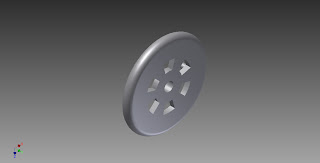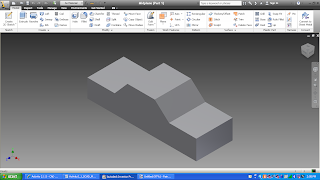Information for the Achievements obtained from:
http://creativeproblemsolvers.blogspot.com/2012/09/the-3rd-annual-chs-cardboard-canoe.html
An additional note, many of these achievements are viewed quantitatively, rather then qualitatively. (Direct Calculations, rather then physical observations).
Achievments:
- Criteria and Constraints
- Sketch Ideas
- Buid it!
- The Longest
- Balence Master
- Videographer
- Surface Area
- Select an Approach
- How Low did you Go
- Feedback
- Make-Your-Own-Achievement
Criteria:
• Build a watercraft that allows you to traverse the CHS swimming pool.
-Our boat that our group built did float in the pool, and it was able to cross the pool thrice.
• Your "boat" must float at least one student through the course of the competition.
-We were able to float Morgan in our group accross the pool. At one point, I was able to stand in it. Our boat sunk, due to balence, after we tried fitting two people in it.
• Protect your workspace from damage!
-We successfully protected our design.
Constraints
• You may only use Cardboard and Duct Tape for this event.
-Only Cardboard and Duct Tape was used. Four and-a-half rolls were used (One was brought, the other three-and-a-half were given to us by Mr. Olson.
• All Staples or other foreign material must be removed from your cardboard. If we trash the pool, we will not be invited back for other activities during the year (yes, we have other activities in mind for 2nd semester).
-The only 'Foreign Object' that was on our cardboard was some tape, left over from moving.
• Cardboard must meet our quality standard and be approved by the instructor (more info to follow)
-Cardboard met the standards. I brought in much of the cardboard, that our group [and class] used.
• Each boat must have a minimum of a 3" tall "sidewall" (no completely flat designs).
-Our boat had roughly an 18" tall "sidewall", which was roughly submerged halfway.
• All exposed cardboard must be covered in duct tape (this will reduce cardboard disintigration in the pool).
-The boat was thoroughly covered, and only after it's christening in the pool, was some cardboard uncovered.
• Each team will be provided one "versa table" cardboard box piece and three 60yrd rolls of duct tape. Any materials beyond this (likely need more cardboard) need to be resourced by your team. -The "Versa Table" cardboard box piece was not used, and four rolls of duct tape were granted to us. A fifth roll was supplied by me.
Implied Constraints
*Design must fit through the door. This is a constraint on the size of the boat itself. If it cannot fit through the door, it won't be able to race.
*The design itself should float. This is to prevent "Submarine"-esque boats, which could potentially be dangerous.
*No sabotage. Self Explanatory.
*Sketch Ideas*
-Below are three pages of brainstorming notes.-
*Design used is on the bottom right*
This design had not exactly a "v-shaped" bottom, but the hull held angles. In this sketch, it was roughly 30 degrees. This is provided so that is the boat was to be unbalanced, it would prevent capsizing. As well, with this design, it was meant to be longer, with a flat hull. This would make it length-wise like a canoe, so that the design would be ballanced laterally, like a canoe.
*Design used is the middle design*
This design was meant to [literally] match that of a pirate dighny. Flat, small walls, yet balence. The round design would equally balence the pressure, resulting in little heel. The pointed bow would make it somewhat aerodynamic, making the force needed to push it less. With the balence and speed, thin walls would make the overall weight of the boat less, making it be a tiny bit more buoyant, and easier to push.
*Design Used is the top-right-ish one*
This style of boat would've taken the longest to produce, yet it would have had the best balence. The outriggers, if constructed properly, would keep the hull barely in the water, making it glide on the water. As well, this would make the balence of the boat perfect, allowing for balence achievements (The Longest, Standing in the Canoe, etc.), rather then speed or distance. A flat bottom could as well be used. Only downside to this design, would be if water got into the outriggers, which would act as a weight on the boat, sinnking it.
*Select an Approach*
With our designs sketched, our group discussed [for quite awhile] the sketches.
+ - Most of these designs focus on balence. Thus sacraficing speed for durability, these designs would focus more on the non-speed/distance competitions. As such, our group later on won the longest-afloat award, and we were able to stand in our design.
Δ - With many of these designs, most of them were a bit on the complicated side. For example, the top-right design on the bottom-most sketch, would've required much work to create the outriggers. Even then, if just one part of the design here would leak, the entire outrigger would sink, and cause the boat to sink.
? - Despite being built for balence, many of these designs could have been modified for an increase of speed. Should our group sacrafice a broader stern for a sleeker hull? Should we add a point, to move the water, while decreasing surface area? In the end, our group chose balence over speed; Brains, over brawns.
! - To be frank, I am suprised that our design floated as well as it did. Literally, a box placed in water floated better then other designs constructed. As well, our hull did not take on much water; only after falling in, did the hull begin to deteriorate.
*Surface Area*
Our group used roughly 4 and a half rolls of Duct Tape. Out of these, one was brought from home, and the other three and a half were supplied in class.
Each roll used was 60 yards [180 Feet] in length. The rolls were roughly 1.875 inches (1 7/8ths) wide. This would mean that each roll would be (1.875" x 2160"), which is 28 1/8 square feet (4050 square inches). With four rolls and a half rolls used, this would make a grand total of 126.5625 square feet (126 9/16 square feet).
Although a little over 125 square feet of duct tape was present, not all of it was used. Substituting in a 3 percent margin of error (+-3%), we will assume that 122.765625 (122 49/64 square feet), and will be approxomated as 122.75 square feet.
Our team wasn't entirely efficient with the duct tape. Assuming that an 80% efficiency was present with the duct tape, then this would make be (0.80 x 122.75), this would make it 98.2 square feet of space. Assuming that each pane is double-taped (both sides of cardboard), then roughly 49.1 square feet of cardboard would be covered. This would roughly be a 7'x7' space of cardboard, double taped.
*Build it!*
Our group did build a design, which was different then most of our sketches.
[Pictures Comming Soon]
*The Longest*
Our design was the last one in the pool, and, for the most part, the least destroyed. The entire event was filmed, if reference is needed.
*Balence Master*
I [Daniel] was able to balance myself in the boat, and was able to stand in it for ~25 seconds; most of this time was spent holding onto the rails of the boat. I was able to freely stand for a few seconds.
*Videographer*
My mom was able to record the entire Cardboard Canoe event. I will post the video, if I can, onto the blog.
*How Low did you Go?*
-Calculations done via Water Displacement Calculations; using mass rather then volume-
[For most of the Trials], Morgan was the person in our boat. Morgan weighed roughly 100lbs. Considering that one cubic foot weighs roughly 62.5 pounds, then morgan would displace (100/62.5 lbs) roughly 1.6 cubic feet of space. Our design 's blueprints consisted of a 27"x36"x18" design, which gives us 17,496 cubic inches, which correlates to 10.125 cubic feet.
Considering that Morgan displaces as much as 1.6 cubic feet of space, and there are 10.125 cubic feet total, then Morgan displaces rougly 15.8% (.158025) of the total volume. This would mean that Morgan's displacement makes the boat sink roughly 2.8445 inches.
If one factors in the weight of duct tape, assuming that the rolls weigh ~1.5 pounds, with 4 and a half rolls used, this adds an aditional 6.75 pounds, this would displace an additional .108 cubic feet, this would make the total mass 1.708 cubic feet, which corresponds to about 16.87% of the boat submerged, which would result in 3.0366 inches of the boat submerged, an additional 0.1919 inches being submerged. These calculations do not factor in the weight of the cardboard, or the mass of the air within the box, although these would proboably effect the overall mass of the boat less.
*Feedback*
+ - To be frank, I'm supprised that our boat was as buoyant as it was. What we lacked in strength, we made up in stability. By not having outriggers above the water, which was one of the causes of our disaster last year, and having them underwater, it helped quite a bit with balencing the boat. This year's project was a huge improvement over last year's.
Δ - Looking back, we really could have used a pointed bow. The blunt bow made it much less aerodynamic, and this would have made it much easier to push the boat. If a bow was added, and it reflected the same buoyancy as the rest of the boat, then we could have potentially placed second or first in the regatta.
? - If I could do this project again, using the same resources; I'd make the hull longer, and not as broad. A rectangle, rather then a square. Although if I do this, I would have to make additional cuts/creases rather then the default cardboard reams, which could lead to water comming in.
! - I'm suprised at the durribility of the boat. It was not only rigid, but it it was watertight; no water leaked into the boat, until the multi-person attempts were conducted. Looks like those additional few rolls of duct tape paid off in the long run.
*Make your Own Achievement!*[Achievement Earned = Industrious]
In our first few days of the class, we did not accomplish much; in the week prior to the event, we worked literally as much as we could during the class periods. The time which we missed in the first few days was quickly made up, as we finished the boat, with some time to spare.








.bmp)







.bmp)


.bmp)

.bmp)

.bmp)



+(Final).bmp)
.bmp)

+(Final).bmp)
.png)
.png)
.png)
.png)
.png)
.png)
.png)
.png)
.png)
.png)
.png)
.png)
.png)
.png)
.png)
.png)


















